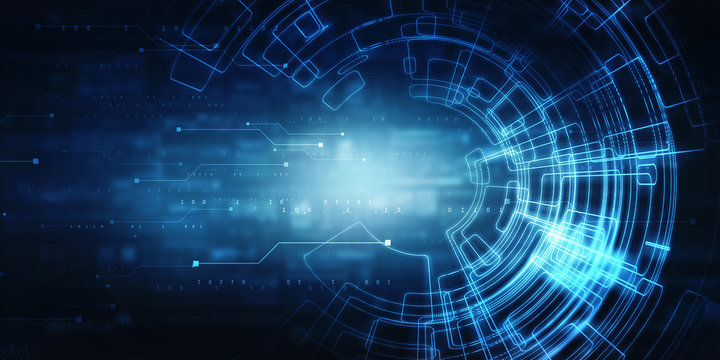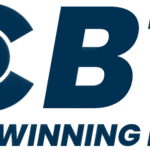The Internet of Things (IoT) is no longer a futuristic concept—it has become the backbone of modern business efficiency. By connecting devices, machines, and systems, IoT tools enable industries to capture real-time data, streamline operations, and enhance decision-making. According to McKinsey, IoT could unlock up to $12.6 trillion in global economic value by 2030, with the biggest gains in manufacturing, healthcare, and logistics. This blog explores how IoT tools drive efficiency across industries, highlighting real-world applications and the tangible benefits businesses can achieve.
The Growing Impact of IoT Across Industries
IoT has evolved into a powerful ecosystem where devices communicate, collect, and analyze information to create smarter processes. Its influence spans industries—reducing downtime in factories, improving patient care in hospitals, cutting costs in logistics, and ensuring sustainability in agriculture.
Key Drivers of IoT Adoption
- Increasing affordability of sensors and devices
- Rising demand for automation and data-driven insights
- Growth of cloud computing and edge technologies
- Stronger focus on operational efficiency and sustainability
IoT in Manufacturing: Unlocking Smart Factories
Manufacturing has been one of the earliest and most significant adopters of IoT. The concept of the “smart factory” illustrates how connected machines and predictive analytics can transform traditional production.
How IoT Drives Efficiency in Manufacturing
- Predictive Maintenance: Sensors monitor machinery health and predict failures before they occur, reducing costly downtimes.
- Supply Chain Visibility: IoT enables real-time tracking of materials and finished goods, ensuring accurate inventory management.
- Quality Control: Smart cameras and sensors detect defects instantly, reducing wastage.
- Energy Optimisation: Connected systems monitor energy use, lowering operational costs.
- Worker Safety: Wearables monitor worker health and environmental conditions to improve safety compliance.
IoT in Healthcare: Enabling Better Patient Outcomes
Healthcare has rapidly embraced IoT, leveraging connected devices to improve patient monitoring, diagnostics, and treatment efficiency.
Benefits of IoT in Healthcare
- Remote Patient Monitoring (RPM): Devices track vitals like heart rate, glucose, and oxygen levels, allowing doctors to intervene proactively.
- Smart Medical Devices: Infusion pumps, wearables, and connected imaging tools improve treatment accuracy.
- Hospital Asset Tracking: IoT tags help track equipment such as wheelchairs, ventilators, and defibrillators.
- Operational Efficiency: IoT-powered scheduling and bed management reduce waiting times.
- Chronic Care Management: Continuous monitoring helps manage long-term conditions like diabetes and hypertension.
IoT in Transportation and Logistics: Enhancing Supply Chains
Transportation and logistics are industries where efficiency directly affects profitability. IoT solutions make fleet operations smarter, safer, and more cost-effective.
Applications of IoT in Logistics
- Fleet Tracking: Real-time GPS and telematics optimize routes, reduce fuel consumption, and improve on-time deliveries.
- Cold Chain Monitoring: Sensors track temperature and humidity for sensitive goods like food and pharmaceuticals.
- Predictive Analytics for Maintenance: Connected vehicles alert operators before breakdowns occur.
- Automated Warehousing: IoT-enabled robots and RFID tags speed up inventory handling.
- Driver Safety: Wearables and smart dashboards monitor fatigue levels to prevent accidents.
IoT in Agriculture: Smart Farming at Scale
Agriculture is undergoing a digital revolution with IoT-driven smart farming practices. Farmers now have access to real-time data that drives precision agriculture.
Ways IoT Improves Agriculture
- Soil and Crop Monitoring: Sensors measure soil moisture, nutrients, and weather conditions for informed irrigation.
- Automated Irrigation Systems: IoT optimizes water usage, reducing waste and improving yields.
- Livestock Tracking: Connected collars and tags monitor animal health and movement.
- Drone Surveillance: IoT-enabled drones capture crop health and growth insights.
- Supply Chain Integration: Smart logistics ensure timely delivery from farm to market.
IoT in Retail: Delivering Personalized Experiences
Retailers use IoT to better understand customer behavior and optimize in-store and online operations.
Retail IoT Applications
- Smart Shelves: Sensors track inventory levels and send alerts for restocking.
- Customer Analytics: Connected devices capture shopper preferences to personalize marketing.
- Automated Checkout: IoT enables cashier-less stores with smart payment systems.
- Energy Savings: IoT lighting and HVAC systems reduce store energy consumption.
- Supply Chain Optimization: End-to-end visibility ensures timely replenishment.
IoT in Smart Cities: Building Sustainable Urban Environments
IoT plays a central role in shaping sustainable, efficient cities. Smart city initiatives are using IoT to reduce congestion, improve safety, and save resources.
Smart City IoT Use Cases
- Traffic Management: Real-time traffic sensors reduce congestion.
- Waste Management: Smart bins signal when they need emptying.
- Public Safety: Connected cameras and sensors help law enforcement.
- Energy Grids: IoT smart grids balance demand and optimize usage.
- Water Management: IoT sensors monitor pipelines for leaks and efficiency.
Overcoming IoT Challenges in Industry Adoption
While IoT adoption is accelerating, businesses still face challenges that need addressing.
Key Challenges
- Data Security: Connected devices create multiple entry points for cyber threats.
- Scalability Issues: Many businesses struggle to scale pilot IoT projects.
- Interoperability: Integrating devices across vendors remains complex.
- High Initial Costs: Deploying sensors and infrastructure requires upfront investment.
- Skill Gaps: Organisations lack IoT experts to maximise solutions.
Integrating IoT With Other Technologies
IoT’s true potential emerges when integrated with complementary technologies such as AI, blockchain, and cloud computing.
- IoT + AI: Enables predictive insights and automation.
- IoT + Blockchain: Ensures secure and transparent supply chains.
- IoT + Cloud: Offers scalable data storage and processing power.
- IoT + 5G: Improves connectivity speed and reduces latency for real-time applications.
A Regional Perspective: IoT and Business Growth
Across regions, IoT adoption is fuelling digital transformation. For instance, businesses exploring innovation often connect IoT with complementary services like mobile app development Dubai, creating scalable ecosystems that integrate connected devices with user-friendly platforms. This combination allows industries to expand reach, improve engagement, and manage data more effectively.
Future of IoT: The Road Ahead
The future of IoT is defined by greater automation, improved security frameworks, and wider adoption across industries. As businesses focus on sustainability and cost efficiency, IoT will remain central to digital transformation strategies worldwide.
Emerging Trends
- Growth of industrial IoT (IIoT) for predictive analytics
- Expansion of connected healthcare ecosystems
- Adoption of edge computing for faster decision-making
- Increased focus on IoT cybersecurity
- Use of digital twins for real-time simulation
Conclusion
IoT tools are more than just connected devices—they are catalysts of efficiency across every sector. From manufacturing floors to hospital wards and from farms to smart cities, IoT empowers businesses to reduce costs, improve productivity, and deliver better customer experiences. As industries continue to evolve, IoT will remain a critical enabler of future-ready operations.
FAQs
What is IoT and why is it important for industries?
IoT, or the Internet of Things, refers to interconnected devices that communicate and exchange data. It is important because it improves efficiency, reduces costs, and helps businesses make smarter decisions using real-time insights.
How does IoT improve operational efficiency?
IoT improves efficiency by automating tasks, enabling predictive maintenance, optimizing resource usage, and providing real-time visibility into processes and assets.
Which industries benefit the most from IoT tools?
Manufacturing, healthcare, logistics, agriculture, retail, and smart cities benefit the most from IoT by enhancing efficiency, productivity, and sustainability.
What challenges do businesses face in adopting IoT?
Businesses face challenges such as cybersecurity risks, scalability issues, interoperability across devices, high initial costs, and lack of skilled professionals for IoT management.
How is IoT connected with future technologies?
IoT integrates with AI, blockchain, cloud, and 5G to enhance predictive analytics, security, scalability, and real-time decision-making. These integrations unlock even greater efficiency across industries.



